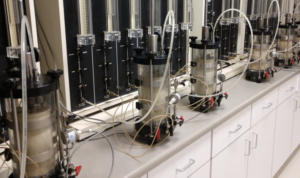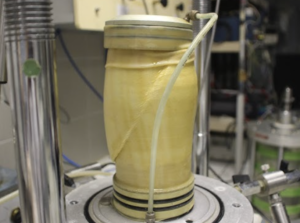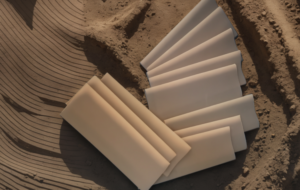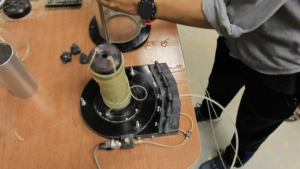How Does Deep Learning Enhance Accuracy in ASTM D4767 Testing?
ASTM D4767 is a standard test method for consolidated undrained triaxial compression testing1 of cohesive soils. It provides essential data for geotechnical engineers to evaluate soil strength, deformation, and stability. However, ensuring high accuracy in these tests remains a challenge due to measurement inconsistencies, sensor errors, and data variability2. Deep learning offers an advanced solution by automating data processing, reducing errors, and improving result reliability. This article explores how deep learning3 can enhance accuracy in ASTM D4767 testing and its future role in compliance and quality control.
ASTM D4767 is a widely used triaxial compression test4 that determines the shear strength parameters of cohesive soils5 under consolidated undrained conditions. It is critical for:
- Foundation Design6: Evaluating load-bearing capacity.
- Slope Stability Analysis: Assessing shear strength for landslide prevention.
- Seismic and Liquefaction Studies: Understanding soil behavior under seismic loads.
- Retaining Wall and Embankment Design: Ensuring structural stability.
Key Parameters Measured in ASTM D4767 Testing
| Parameter | Definition | Importance |
|---|---|---|
| Deviator Stress ((\sigma_d)) | Difference between axial and confining stresses | Determines soil failure strength |
| Effective Stress ((\sigma’)) | Total stress minus pore pressure | Evaluates long-term stability |
| Pore Water Pressure (u) | Pressure in soil voids | Critical for liquefaction analysis |
| Shear Strength ((\tau)) | Resistance to sliding forces | Used in geotechnical design |
Accurate measurement of these parameters is crucial for safe and cost-effective engineering projects.
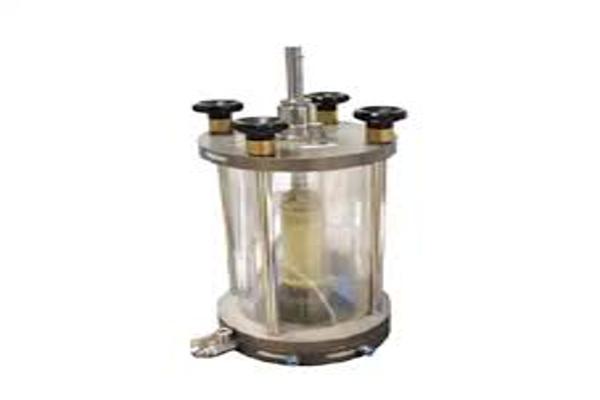
Challenges in Achieving High Accuracy in Triaxial Compression Tests
Despite its significance, ASTM D4767 testing faces several challenges that impact result accuracy:
-
Sensor Noise and Calibration Issues
- Load cells, pressure transducers, and displacement sensors can introduce errors due to drift, misalignment, or external disturbances.
- Small deviations in pore pressure or stress readings can significantly alter soil strength calculations.
-
Human Interpretation Errors
- Manual data processing increases variability in stress-strain curve interpretation.
- Test conditions such as sample misalignment can introduce bias in results.
-
Nonlinear Soil Behavior Complexity
- Traditional empirical models struggle to capture nonlinear deformation patterns, leading to less reliable strength predictions.
- Variability in soil moisture content and particle arrangement makes achieving repeatable results difficult.
Comparison of Common Errors in ASTM D4767 Testing
| Error Type | Cause | Impact on Results |
|---|---|---|
| Sensor Drift | Aging equipment | Measurement inconsistencies over time |
| Operator Bias | Manual data processing | Varies based on expertise |
| Test Sample Variability | Poor preparation | Alters stress-strain response |
| Data Noise | External vibrations | Reduces accuracy of recorded parameters |
Deep learning can mitigate these challenges by automating data analysis and enhancing measurement precision.

Leveraging Deep Learning for Data Processing and Error Reduction
Deep learning offers several advantages in enhancing ASTM D4767 test accuracy7 by improving data interpretation, anomaly detection, and predictive analysis. AI-powered models can detect patterns in complex soil behavior8 and adjust test parameters dynamically.
1. AI-Powered Data Preprocessing
- Convolutional Neural Networks (CNNs) filter stress-strain data, removing sensor noise and anomalies.
- Autoencoders detect deviations from expected test patterns, flagging faulty readings.
2. Real-Time Stress-Strain Curve Optimization
- Recurrent Neural Networks (RNNs) analyze real-time stress-strain responses, predicting failure points more accurately.
- Deep reinforcement learning can adjust loading rates dynamically for optimal calibration.
3. Automated Pore Pressure Monitoring
- AI detects irregular pore pressure trends, reducing errors in effective stress calculations.
- Predictive analytics adjusts drainage conditions to improve test reliability.
Comparison of AI-Based vs. Traditional Data Processing
| Data Processing Method | Accuracy Improvement | Time Efficiency |
|---|---|---|
| Manual Interpretation | Moderate | Slow |
| AI-Based Signal Filtering | High (reduces noise by 30-50%) | Fast |
| Deep Learning Prediction Models | Very High (error reduction ~80%) | Real-time |
By implementing deep learning models, geotechnical labs can achieve higher accuracy, improved test repeatability, and faster data analysis.

Future Applications of AI in ASTM D4767 Compliance and Quality Control
As AI technology continues to evolve, its applications in geotechnical testing compliance and quality control are expanding. Future advancements include:
1. AI-Driven Standard Compliance Verification
- AI algorithms will automatically cross-check test results against ASTM D4767 standards, flagging inconsistencies.
- Regulatory agencies may adopt AI-based auditing systems for real-time verification of test accuracy.
2. AI-Powered Autonomous Triaxial Testing Systems
- Fully automated robotic triaxial testers equipped with AI will adjust test parameters based on real-time soil responses.
- AI models will predict optimal confining pressures and shear strengths, reducing the need for manual calibration.
3. Cloud-Based AI Monitoring for Remote Test Validation
- AI models will store and compare test results across multiple laboratories.
- Blockchain and AI integration may ensure tamper-proof geotechnical test records for compliance verification.
Potential AI Advancements in ASTM D4767 Testing
| Future AI Feature | Expected Benefit |
|---|---|
| AI-powered compliance verification | Automatic ASTM D4767 validation |
| AI-driven robotic triaxial testing | Eliminates human error in sample preparation and testing |
| Cloud-based AI analytics | Remote quality control and multi-lab data consistency |
As AI adoption increases, geotechnical testing will become more accurate, efficient, and standardized.

Conclusion
Deep learning is revolutionizing ASTM D4767 testing by enhancing data accuracy, minimizing human errors, and optimizing test calibration. AI-powered models automate anomaly detection, real-time data filtering, and stress-strain analysis, leading to higher reliability in geotechnical testing. As AI continues to advance, future applications will include automated compliance verification, robotic testing, and real-time quality control, making ASTM D4767 testing faster, smarter, and more precise.
-
Understanding this standard is crucial for geotechnical engineers to ensure accurate soil testing and analysis. ↩
-
Exploring these factors can help improve testing accuracy and reliability in geotechnical engineering. ↩
-
Discover how deep learning technologies can revolutionize soil testing and enhance data processing efficiency. ↩
-
Understanding the triaxial compression test is essential for grasping soil behavior under stress, crucial for engineering applications. ↩
-
Exploring shear strength parameters helps in understanding soil stability and safety in construction projects. ↩
-
Foundation design is vital for structural integrity; learning about it can enhance your engineering knowledge. ↩
-
Explore how deep learning enhances ASTM D4767 test accuracy, leading to more reliable soil testing results. ↩
-
Learn about the role of deep learning in identifying intricate soil patterns, crucial for accurate analysis. ↩


